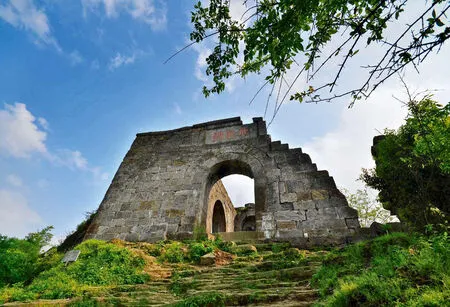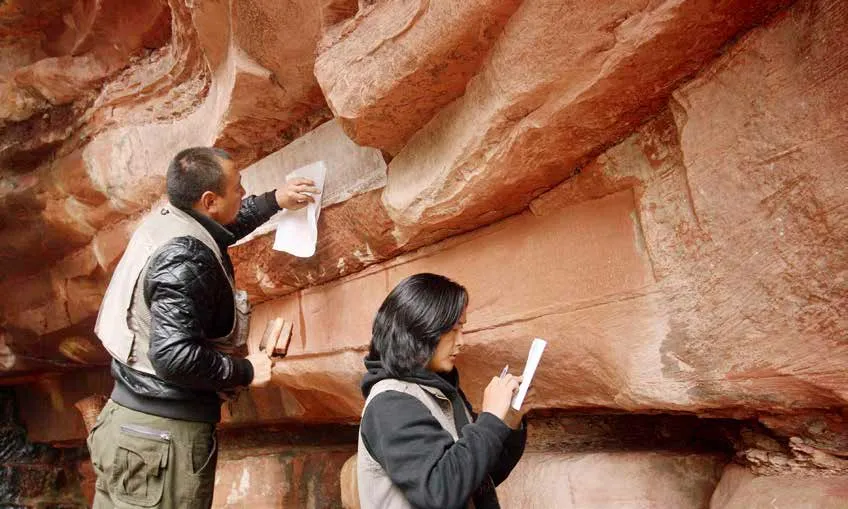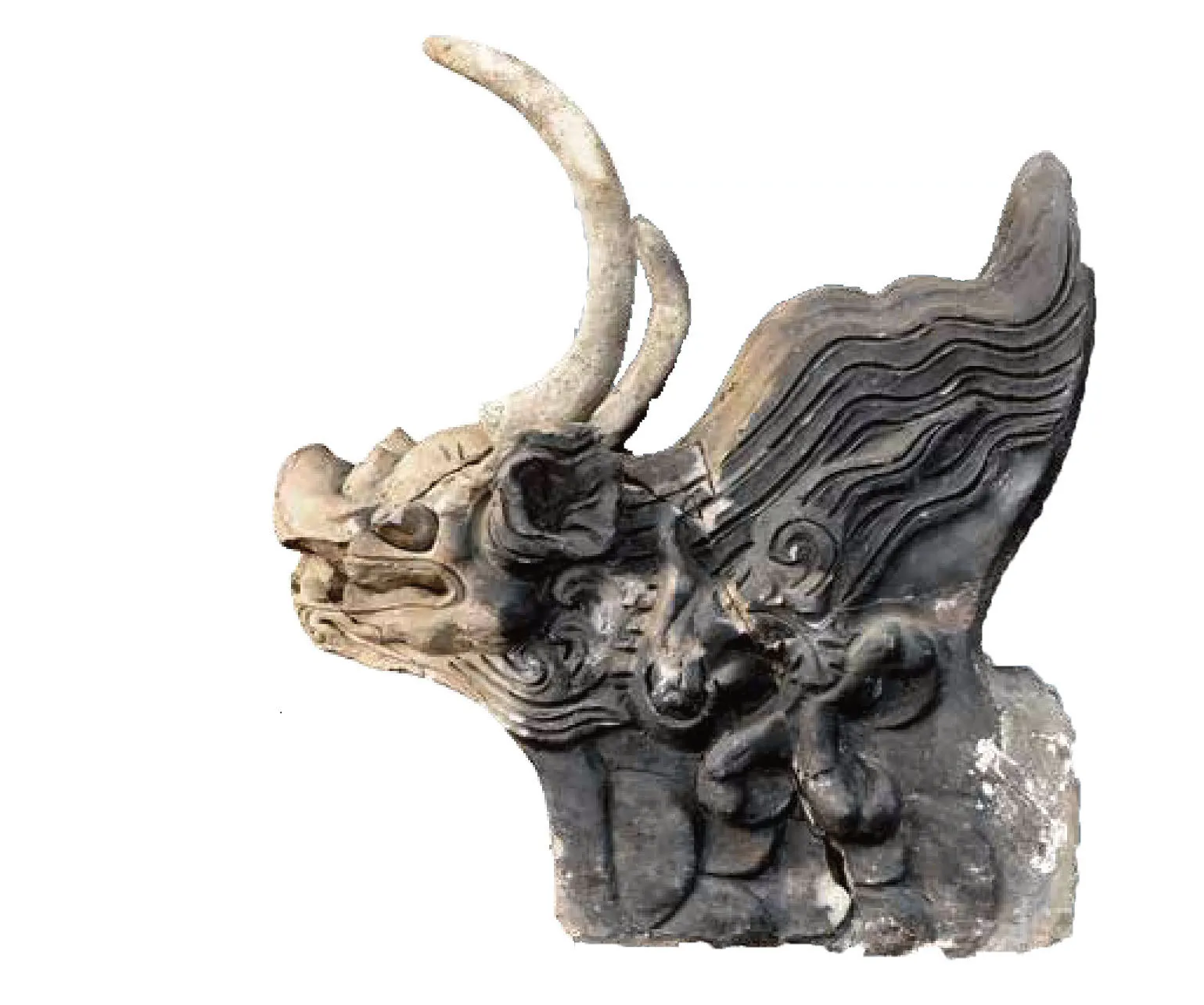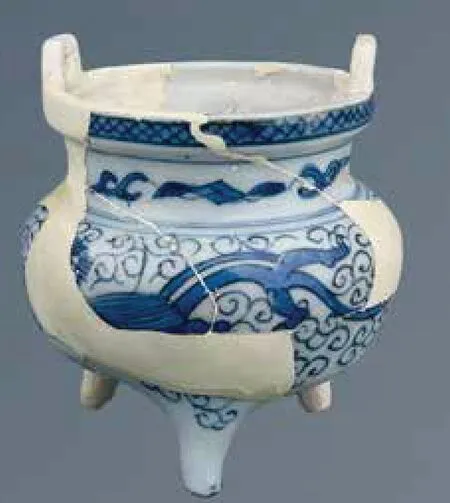Lost Fortress to World Heritage
Text by Zhou Chenliang
Photos courtesy of Guizhou Provincial Museum unless otherwise credited
Restoring cultural relics and reproducing the beauty of ancient Chinese architecture through science and technology are the goal of all Hailongtun cultural conservation workers.
1981
Longyan Mountain in Zunyi City,Guizhou Province
Southern Song Dynasty to late Ming Dynasty(765 to 422 years ago)
12.9 square kilometers
Inscribed onto the World Cultural Heritage List in July 2015

The ruins of the Feilong Pass,the entrance to Hailongtun Tusi Fortress,retain much of the its original shape.(Photo by Peng Hao)
A gainst mountains,the magnificent Hailongtun Tusi Fortress in Zunyi City,southwestern China’s Guizhou Province,was jointly built by the Southern Song Dynasty (1127-1279) and the Yang clan,a local tribe whose leader was appointed as “Tusi”(chieftain) of Bozhou,in 1257.Later,the fortress was destroyed in warfare in 1600.Now,it is renowned as one of the oldest,largest,and best-preserved Tusi fortress sites in southwestern China.
At the 39th session of the World Heritage Committee in July 2015,it was added to the World Heritage List alongside the site of Tangya Tusi Domain in Hubei Province and the site of Laosicheng Tusi Domain in Hunan Province.The ancient Tusi fortress,which has been sleeping for centuries,finally gained global attention.
From discovery to status as a historical site under nationallevel protection and then the common wealth of humanity,the site of Hailongtun Tusi Fortress achieved a massive transformation in the eyes of archaeological workers.
Cultural Treasure Trove in the Mountains
Established in the Yuan Dynasty (1271-1368) and dissolved during the reign of Emperor Yongzheng in the Qing Dynasty (1644-1911),the Tusi chiefdom was a way for the royal court to rule over ethnic minorities in the southwestern region.

Li Fei (right),curator of Guizhou Provincial Museum and then deputy director of the Guizhou Provincial Cultural Relic and Archaeology Research Institute,and her colleague work on stone carved records of logging to build Tusi palaces.In April 2012,Li Fei led an archaeological team to conduct the first large-scale excavation of the site of Hailongtun Tusi Fortress.
The three sites inscribed on the World Heritage List are the well-preserved remains of the Tusi chiefdom from its heyday,which were the ruling centers of chieftains at different levels including a military fortress at the highest level.
Ge Zhenya,deputy chairman of Zunyi History and Culture Research Association who discovered the site of Hailongtun Tusi Fortress,noted that the search was inspired by historical documents and archives on Zunyi includingand,which tell the history of Hailongtun Tusi Fortress and legendary stories of the Yang clan.He was stunned by how frequent wars and battles were in its history,and came up with the idea of finding the location of the ancient Hailongtun Tusi Fortress.
Despite written records,for a long time,no one knew where the site of the fortress was.“I started searching for the lost fortress at Hailongpo but found nothing,”he said.“I continued the search effort,for which I almost traversed every corner of Zunyi.”
After two years of efforts,Ge finally found the site of Hailongtun Tusi Fortress hidden deep in the mountains,and it was confirmed as a provinciallevel cultural relic site in 1982.In 1999,he led preliminary excavation work of the site and discovered countless human bones,broken armor,and weapons in the soil.“A thrilling battle 400 years ago was nearly narrated by the remains that we found,” he said.
In 2001,the ruins of Hailongtun Tusi Fortress were upgraded to a historical and cultural site protected at the national level.Archaeological work at the site also entered a lengthy and difficult stage of cultural relics sorting.From 2012 to 2014,the Guizhou Provincial Institute of Cultural Relics and Archaeology conducted two excavations on the site and unearthed tens of thousands of relics including broken tiles,ridge beasts,and porcelain.The discoveries not only uncovered a splendid side of the lost mysterious Tusi chiefdom,but also clarified changes in the outline of Hailongtun in different periods.
For archaeological workers,the Hailongtun site is like a cultural treasure trove of vast historical information.
Encyclopedia of China’s Tusi Studies
July 4,2022 marks the seventh anniversary of the addition of the site of Hailongtun Tusi Fortress on the World Heritage List.Liu Qingzhu,renowned archaeologist and member of the Chinese Academy of Social Sciences,wrote in the preface to the forthcomingthat the Tusi sites in China are highly significant to history and science for the political and cultural recognition of a unified multi-ethnic country.
He remarked that the Hailongtun site has served as an encyclopedia of China’s Tusi studies,providing a complete and powerful sample for researching the ancient chieftain system.
Restoring cultural relics and reproducing the beauty of ancient Chinese architecture through science and technology are the goal of all Hailongtun cultural conservation workers.

A ridge beast decoration unearthed from the site of Hailongtun Tusi Fortress.Historically,such beast decorations could only be found on the roof of an imperial palace or temple.This implied the Hailongtun chieftain’s power and dignity like a king.
Jiang Jiyi,director of the Zunyi Hailongtun Cultural Heritage Administration,said that the administration carries out data monitoring,analysis,sorting,and uploading year round.It also started using intelligent robots to conduct 24-hour real-time monitoring of Feifeng Pass and Chaotian Pass to form a multi-dimensional protection pattern fusing people,technology,the internet,and big data.
The Haichao Temple repair project was a highlight of the Tusi sites’ application for the World Heritage status.Located atop the Hailongtun fortress,the temple was built on the site of a new palace for chieftain Yang Yinglong in the Ming Dynasty(1368-1644).After centuries of weathering,it became very difficult to repair.Therefore,the designer stayed close during the entire repairing process of the temple to minimally reduce changes to the survived buildings and maximally preserve their original shapes.
To better protect the ancient city wall and show tourists the steep Hailongtun defense system built on the mountains,the Zunyi Hailongtun Cultural Heritage Administration launched repair and maintenance work on the fortress wall in December 2017.
From a lost fortress hidden in barren mountains to worldrenowned cultural heritage,the Hailongtun Tusi Fortress and its legends and history are getting discovered by more and more people.Its glory as a World Heritage site keeps shining,and the protection and inheritance of the site is only expanding.

A tripod incense burner with blue and white dragon patterns unearthed from the site of Hailongtun Tusi Fortress.
China Pictorial2022年7期
- China Pictorial的其它文章
- Nanhai No.1:Leading China’s Underwater Archaeology
- Tongmuling Site:An Archaeological Breakthrough in China’s Mining and Metallurgy
- A River of Archaeology
- The Housi’ao Kiln Site:Exemplary Ceramic Archaeology
- Liangzhu:A Model for Large-Scale Archaeological Sites
- A Discovery for the Ages
